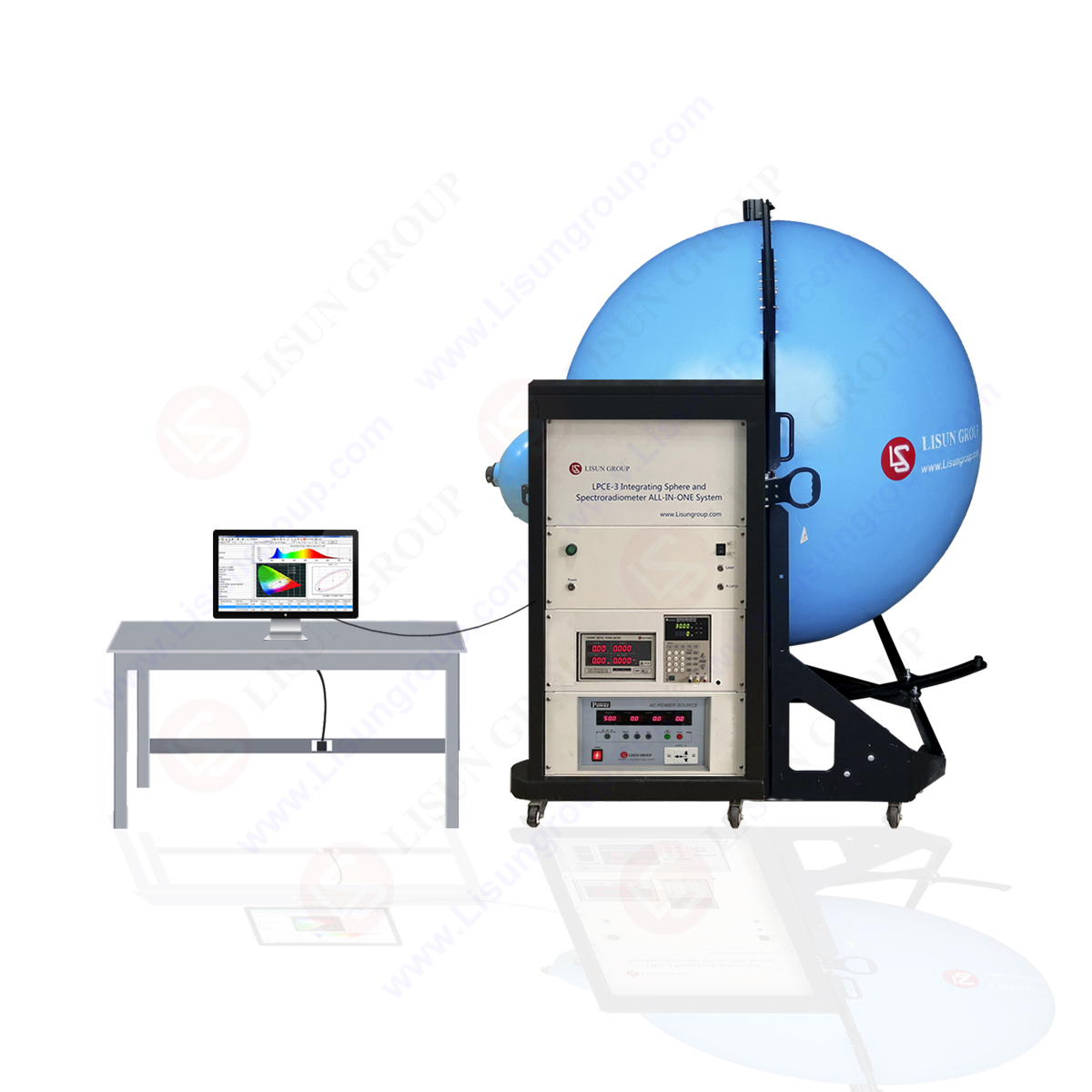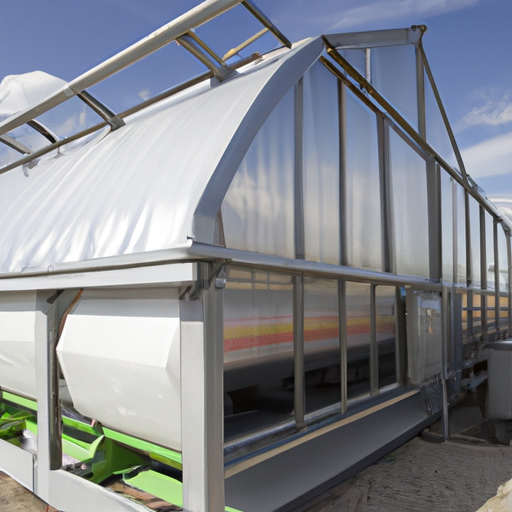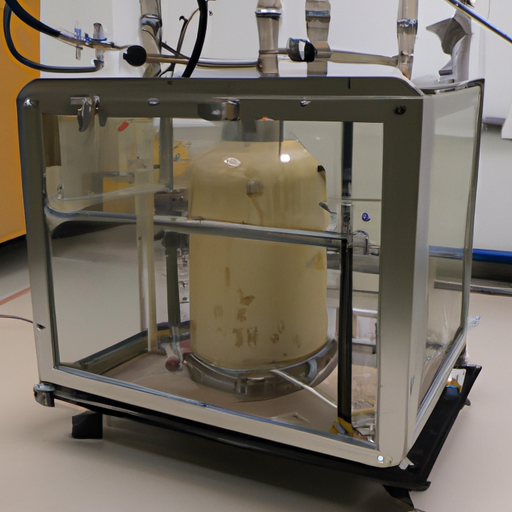Are you looking for a reliable and accurate way to measure light? An integrating sphere is an ideal solution for many applications. It is a device that collects and evenly distributes light from a source, allowing for precise measurements. With an integrating sphere, you can measure the total flux, spectral distribution, and angular distribution of light.
Integrating spheres are used in a variety of industries, including medical, automotive, and aerospace. They are also used in research and development, as well as in the production of lighting products. With an integrating sphere, you can measure the total flux, spectral distribution, and angular distribution of light. This allows you to accurately measure the intensity of light and its characteristics.
Integrating spheres are designed to be highly accurate and reliable. They are constructed with a highly reflective inner surface that ensures that all of the light is collected and evenly distributed. This ensures that the measurements are accurate and consistent.
Integrating spheres are also easy to use and maintain. They are designed to be user-friendly and require minimal maintenance. This makes them ideal for use in a variety of applications.
If you are looking for a reliable and accurate way to measure light, an integrating sphere is an ideal solution. To learn more about how an integrating sphere can enhance your measurement accuracy, visit our website today.
Table of Contents
Introduction
Integrating spheres are an essential tool for any laboratory or industrial setting that requires accurate measurements of light. They are used to measure the intensity, color, and other characteristics of light sources, and can be used to measure the reflectance of materials. An integrating sphere can significantly enhance the accuracy of your measurements by providing a uniform light source and eliminating the effects of stray light. The sphere also allows for the measurement of light from multiple angles, which can provide more accurate results than a single-point measurement. Additionally, the sphere can be used to measure the total light output of a source, which can be useful for comparing different light sources. With the help of an integrating sphere, you can be sure that your measurements are as accurate as possible.
Exploring the Benefits of Using an Integrating Sphere for Improved Measurement Accuracy
An integrating sphere is a device used to measure the optical properties of materials. It is a hollow, spherical structure with a diffuse, highly reflective inner surface. The sphere is designed to collect and integrate light from a source, such as a light bulb, and then reflect it back out in a uniform manner. This allows for more accurate measurements of the optical properties of materials, such as reflectance, transmittance, and absorption.
Integrating spheres are used in a variety of applications, including spectrophotometry, photometry, and colorimetry. In spectrophotometry, an integrating sphere is used to measure the intensity of light at different wavelengths. This is done by measuring the amount of light that is reflected, transmitted, or absorbed by a sample. In photometry, an integrating sphere is used to measure the intensity of light from a source. This is done by measuring the amount of light that is reflected, transmitted, or absorbed by a sample. In colorimetry, an integrating sphere is used to measure the color of light from a source. This is done by measuring the amount of light that is reflected, transmitted, or absorbed by a sample.
The use of an integrating sphere provides several advantages over traditional methods of measuring optical properties. First, it allows for more accurate measurements of the optical properties of materials. This is because the sphere collects and integrates light from a source, and then reflects it back out in a uniform manner. This eliminates the need for multiple measurements, which can lead to errors. Additionally, the use of an integrating sphere eliminates the need for calibration, which can be time-consuming and costly.
In addition to providing more accurate measurements, the use of an integrating sphere also allows for faster measurements. This is because the sphere collects and integrates light from a source, and then reflects it back out in a uniform manner. This eliminates the need for multiple measurements, which can take a significant amount of time. Additionally, the use of an integrating sphere eliminates the need for calibration, which can be time-consuming and costly.
Overall, the use of an integrating sphere provides several advantages over traditional methods of measuring optical properties. It allows for more accurate measurements, faster measurements, and eliminates the need for calibration. For these reasons, the use of an integrating sphere is becoming increasingly popular in a variety of applications.
Understanding the Principles of Integrating Sphere Design for Enhanced Measurement Precision
Integrating sphere design is a critical component of precision measurement systems. It is used to measure the optical properties of materials, such as reflectance, transmittance, and absorption. The design of an integrating sphere is based on the principle of integrating the light from a source over a large area. This allows for more accurate measurements of the optical properties of materials.
Integrating sphere design is based on the principle of integrating the light from a source over a large area. This is done by using a hollow sphere with a diffusely reflecting inner surface. The light from the source is reflected off the inner surface of the sphere and is then collected by a detector. The detector measures the total amount of light that is collected from the sphere. This allows for more accurate measurements of the optical properties of materials.
The design of an integrating sphere is based on several principles. First, the inner surface of the sphere must be highly diffusely reflecting. This ensures that the light from the source is evenly distributed over the entire surface of the sphere. Second, the sphere must be designed to minimize the amount of light that is lost due to absorption or scattering. This is done by using materials with low absorption and scattering coefficients. Finally, the sphere must be designed to minimize the amount of light that is lost due to reflection. This is done by using materials with low reflectance coefficients.
The design of an integrating sphere is critical for achieving accurate measurements of the optical properties of materials. The design must be optimized to ensure that the light from the source is evenly distributed over the entire surface of the sphere. Additionally, the design must be optimized to minimize the amount of light that is lost due to absorption, scattering, and reflection. By following these principles, integrating sphere design can be used to achieve enhanced measurement precision.
Analyzing the Impact of Integrating Sphere Geometry on Measurement Accuracy
Integrating sphere geometry is an important factor in determining the accuracy of measurements. It is a type of optical system that is used to measure the intensity of light from a source. The system consists of a hollow sphere with a diffusely reflecting inner surface, and a light source placed at the center of the sphere. The light is then reflected off the inner surface of the sphere and is collected by a detector placed at the sphere’s exit port.
The geometry of the integrating sphere is critical for accurate measurements. The size of the sphere, the distance between the light source and the detector, and the reflectivity of the inner surface all affect the accuracy of the measurements. The size of the sphere determines the amount of light that is collected by the detector. The distance between the light source and the detector affects the amount of light that is scattered by the inner surface of the sphere. The reflectivity of the inner surface affects the amount of light that is reflected back to the detector.
The accuracy of the measurements can be improved by optimizing the geometry of the integrating sphere. The size of the sphere should be chosen to maximize the amount of light that is collected by the detector. The distance between the light source and the detector should be chosen to minimize the amount of light that is scattered by the inner surface of the sphere. The reflectivity of the inner surface should be chosen to maximize the amount of light that is reflected back to the detector.
By optimizing the geometry of the integrating sphere, the accuracy of the measurements can be improved. This is important for applications such as spectroscopy, where accurate measurements are essential. By optimizing the geometry of the integrating sphere, the accuracy of the measurements can be improved, resulting in more reliable results.
Examining the Role of Integrating Sphere Materials in Achieving High Measurement Accuracy
Integrating spheres are an essential tool for achieving high measurement accuracy in a variety of applications. They are used to measure the optical properties of materials, such as reflectance, transmittance, and absorption. The sphere is designed to collect and integrate light from a source, and then measure the amount of light that is reflected, transmitted, or absorbed by the material.
The accuracy of the measurements taken with an integrating sphere depends on the quality of the materials used to construct the sphere. The sphere must be made of materials that are highly reflective and have a low absorption coefficient. The materials must also be able to withstand the high temperatures generated by the light source.
The most common materials used to construct integrating spheres are aluminum, stainless steel, and glass. Aluminum is the most common material used because it is lightweight, durable, and highly reflective. Stainless steel is also used because it is highly reflective and has a low absorption coefficient. Glass is used because it is highly transparent and has a low absorption coefficient.
The materials used to construct the sphere must also be carefully chosen to ensure that the sphere is perfectly spherical. If the sphere is not perfectly spherical, the measurements taken with it will be inaccurate. The materials must also be chosen to ensure that the sphere is free from any defects or imperfections that could affect the accuracy of the measurements.
Finally, the materials used to construct the sphere must be chosen to ensure that the sphere is able to withstand the high temperatures generated by the light source. If the materials used are not able to withstand the high temperatures, the measurements taken with the sphere will be inaccurate.
By carefully selecting the materials used to construct the integrating sphere, it is possible to achieve high measurement accuracy. The materials must be chosen to ensure that the sphere is perfectly spherical, free from any defects or imperfections, and able to withstand the high temperatures generated by the light source. By doing so, it is possible to achieve accurate measurements with an integrating sphere.
Investigating the Role of Integrating Sphere Calibration in Enhancing Measurement Accuracy
Integrating sphere calibration is a critical step in ensuring accurate measurements of light sources. It is a process that involves the use of a calibrated integrating sphere to measure the total light output of a light source. The sphere is designed to collect and integrate all of the light emitted from the source, allowing for a more accurate measurement of the total light output.
Integrating sphere calibration is a complex process that requires precise measurements and careful attention to detail. The sphere must be carefully calibrated to ensure that it is collecting and integrating all of the light emitted from the source. This is done by measuring the light output of the source at various angles and distances from the sphere. The measurements are then used to calculate the total light output of the source.
Once the sphere is calibrated, it can be used to measure the total light output of a light source. This is done by placing the source inside the sphere and measuring the total light output. The measurements are then compared to the calibrated values to determine the accuracy of the measurement.
Integrating sphere calibration is an important step in ensuring accurate measurements of light sources. It is a complex process that requires precise measurements and careful attention to detail. The process ensures that the total light output of a light source is accurately measured, allowing for more accurate measurements of light sources. This is especially important for applications such as lighting design, where accurate measurements are essential for achieving the desired results.
Conclusion
The use of an integrating sphere can be a great way to improve the accuracy of your measurements. By using an integrating sphere, you can ensure that the light source is evenly distributed across the sample, which can help to reduce errors due to uneven illumination. Additionally, the integrating sphere can help to reduce errors due to stray light, as well as errors due to the sample’s surface reflectance. By using an integrating sphere, you can ensure that your measurements are as accurate as possible.

 中文简体
中文简体





